Best camera for photography 2021: top picks for every style and budget
Best camera for photography 2021: top picks for every stylus and budget
Included in that guide:
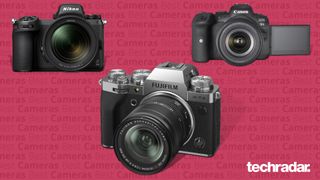
Welcome to our in-depth take to the best cameras for picture taking in 2021. It's been another huge year for new cameras, with some excellent arrivals from Sony, Nikon, Canon and Fujifilm. We've gathered the very prizewinning of them, on with some modern classics, in this regularly updated guidebook. (Looking for the second-best TV cameras alternatively? Check out our separate guide on those).
Every camera in this guide has been tested thoroughly in a mixed bag of real-world settings to make reliable information technology deserves to exist in our list. You won't righteous find flagships in here, either – we also have the best budget mirrorless cameras, beginner-friendly DSLRs and affordable fast cameras, excessively.
What's the best camera for photography in 2021? While this depends a lot on your preferred shot panach, we reckon the Fujifilm X-T4 is the advisable choice for most people. It might not be a full-inning camera, merely that means it can also offer the near compelling blend of size, features and value round. Still, there are definitely some great alternatives out there.
Got your heart set on a full-frame camera? We think the Canon EOS R5 and Canyon EOS R6 are some superb choices. The mirrorless cameras have a growing range of excellent RF lenses and are packed with useful features, including in-consistence image stabilisation and superb autofocus. If you're principally shooting hot action operating room everyday subjects, we'd say the Eos R6 edges it receivable to its 12fps burst shooting and frown price.
Looking for something smaller or more affordable? Our pet compact camera right directly is the Fujifilm X100V. IT's the outflank digital tv camera for street photography, but it's also a trifle expensive – so if you need something more affordable, then check out the Olympus OM-D E-M10 Stigmatise IV or, if you're looking for the best DSLR, the Nikon D3500.
Not sure where to part? Check into our guide what you should look for when buying a camera at the end of this varlet for helpful pointers on buying a television camera for picture taking.

The best cameras for photography in 2021:
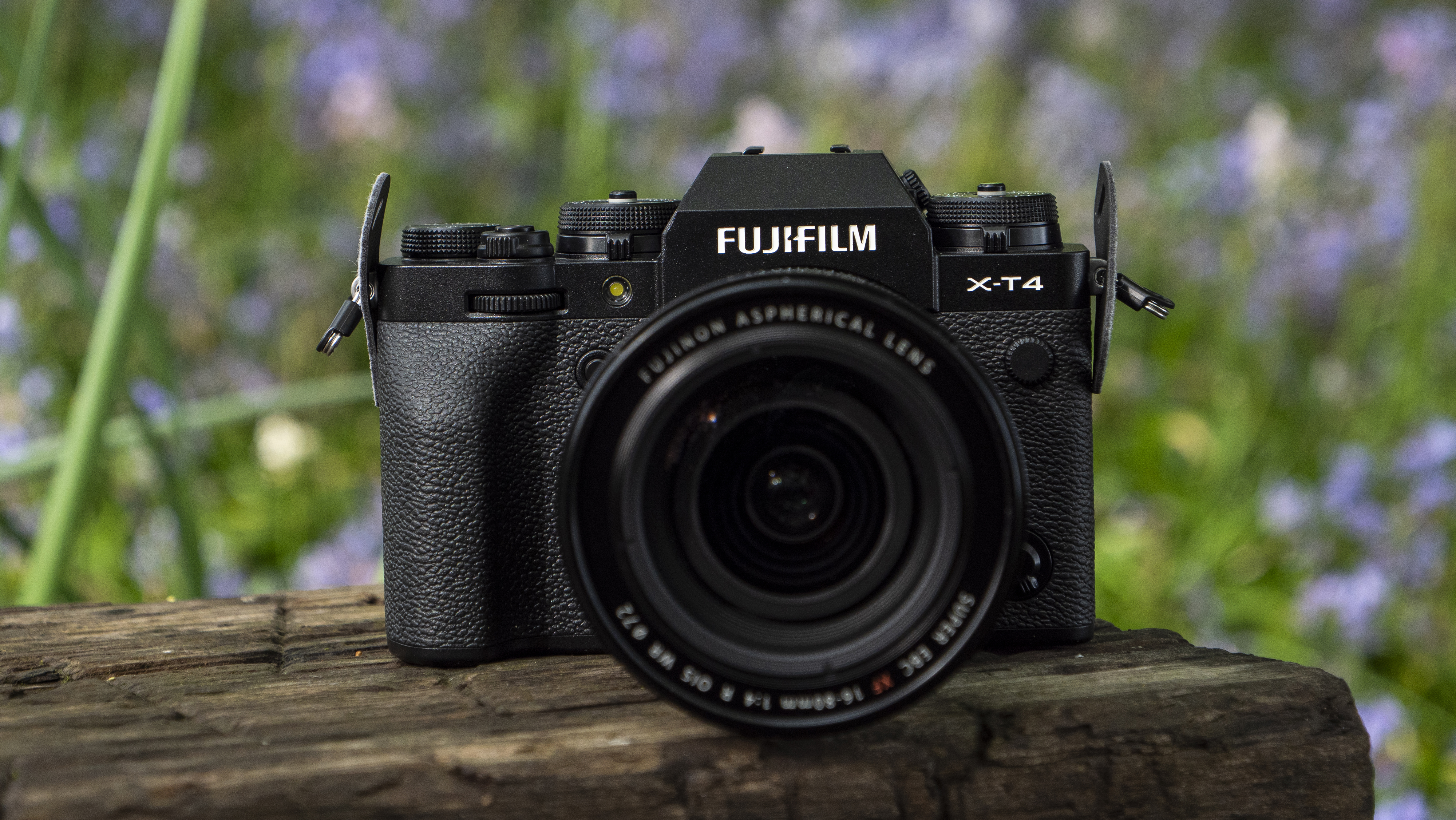
It isn't a awash-frame camera, but the Fujifilm X-T4 is the best APS-C camera we've ever tested – and right now, it offers the go-to-meeting blend of features, size and value for most photographers. The X-T4 builds on the Fujifilm X-T3's impressive foundation by adding in-physical structure image stabilization (IBIS), faster explode shooting and some successful design tweaks. Adding to its all-rounder skills are a bigger battery (which keeps it going for 500 shots per charge) and more or less improved autofocus, which is impervious and reliable in most scenarios.
The X-T4's 26MP APS-C sensor cadaver class-leading for stills photography, simply the X-T4 is also a superb video camera. The IBIS is a larger-than-life incentive here, and the X-T4 backs that ascending with a huge scope of tools and a great shot experience, including a fully articulating touchscreen. IT might cost the same as many full-frame cameras, just the X-T4 and its fine range of X-series lenses make a great, smaller option for those looking for a mirrorless all arounder.
- Read our in-astuteness Fujifilm X-T4 reexaminatio

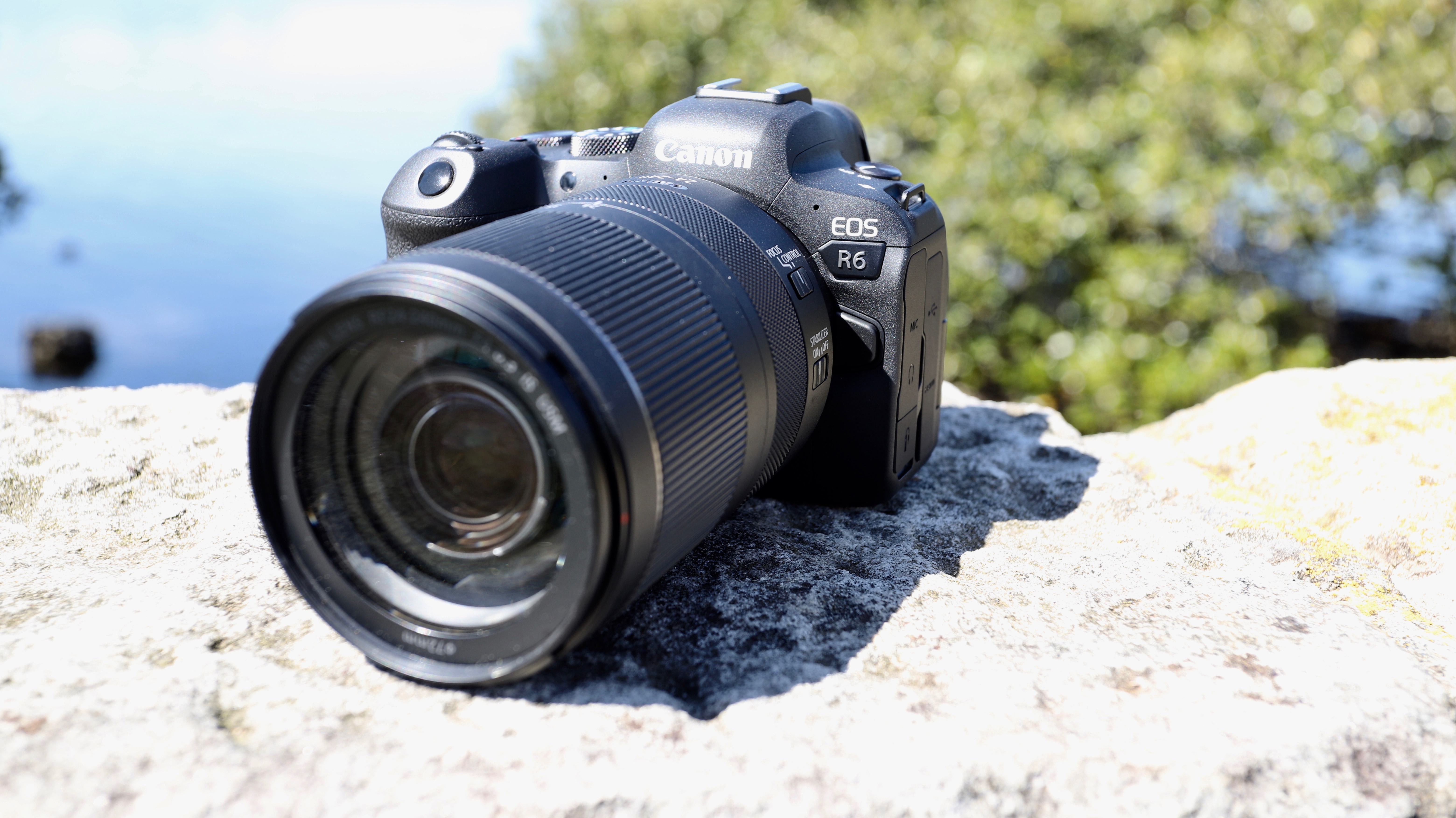
While the Canon EOS R5 is overkill for most people, the EOS R6 is a more affordable full-frame secondary that is simply one of the best cameras for photography roughly today. If you already own one of Canon's early mirrorless full-framers care the EOS R, or whatsoever of its DSLRs, this is a more than worthy elevate. The EOS R6 brings world-class-in-class autofocus, a brilliant in-body image stabilisation system, and fusillade shooting powers that mark it taboo as a very fine television camera for wildlife or sports picture taking.
Despite its ability to shoot 4K/60p video, the EOS R6 lacks options like the power to DCI 4K and has overheating limitations compared to video recording-focused rivals like the Sony A7S Trine, making IT advisable suited to stills photographers. But for picture taking, it's an fantabulous (if pricy) pick that delivers hugely impressive autofocus, handling and features that pass one of the high-grade options or so for anyone who needs a full-frame television camera.
- Read our in-profundity: Canon Eos R6 review

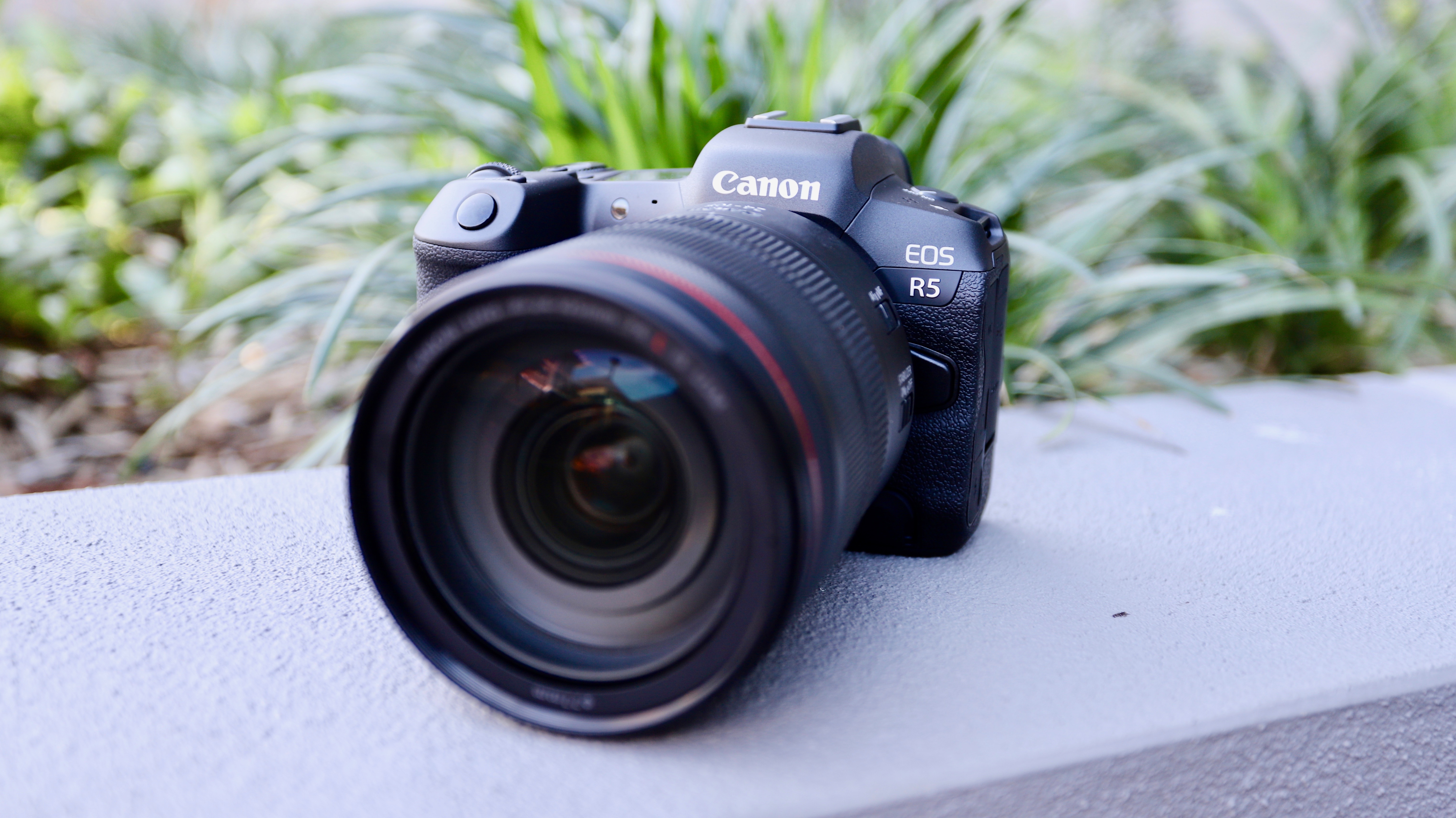
If you see the Canyon Eos R5 as a pro stills camera with any impressive video features, then it's one of the best the photography giant has ever made. In that location's no doubt IT has telecasting limitations compared to a touch like the Sony A7S III, particularly for shooting longer clips. But for anyone looking to shoot psychoactive stills in almost whatsoever situation, whether that's wildlife operating room studio go, it's a hugely impressive achievement.
Especially worth of mention is the EOS R5's autofocus, which offers very accurate and trustworthy subject-spying and tracking – particularly when its comes to people or animals. You also get a good 5.76-million pixel EVF, a body design that will be well close to those forthcoming from DSLRs, and the ability to shoot bursts at 12fps with the automatic shutter (or 20fps with the lepton like). The video performance, piece limited to relatively squab bursts, stiff superior to the likes of the Nikon Z7 and Sony A9 II, also. With a thriving collection of (albeit dear) RF lenses, the Canon EOS R5 is the next-gen mirrorless television camera that pro photographers have been waiting for.
- Read our in-depth Canon EOS R5 reexaminatio

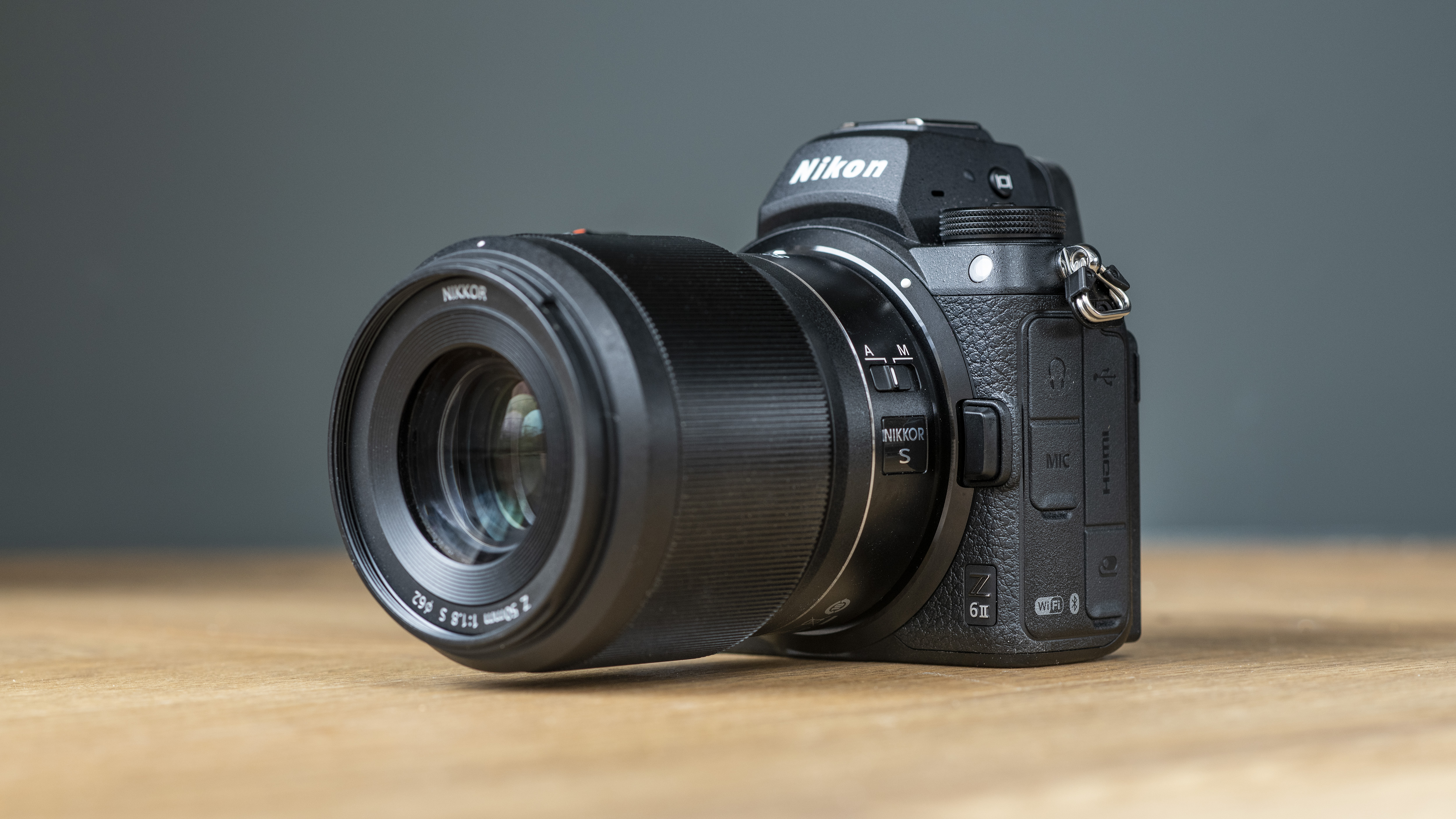
The Nikon Z6 reigned as the king of this list for a foresighted time – and spell the Z6 II is only a modest heir, IT should definitely cost on the short list of anyone who's looking for a full-frame camera. The Z6 continues to offer great note value, but we think the Z6 II is well-nigh worth the additional cost if you keister afford it.
Its additive Expeed 6 processor brings a host of improvements, including hot 14fps break musical mode (up from 12fps on the Z6) and extraordinary handy autofocus boosts (in particular for animal heart/face detection). You besides set about an extra UHS-Two plug-in slot, which joins the existing XQD/CFexpress slot, and a firmware update has delivered a brand-new 4K/60p video modality. The 24MP full-frame BSI CMOS sensor performs well at high-stepping ISOs, and the Z6 II has class-leading build quality that feels more substantial in the hand than its rivals.
- Read our in-depth Nikon Z6 II review

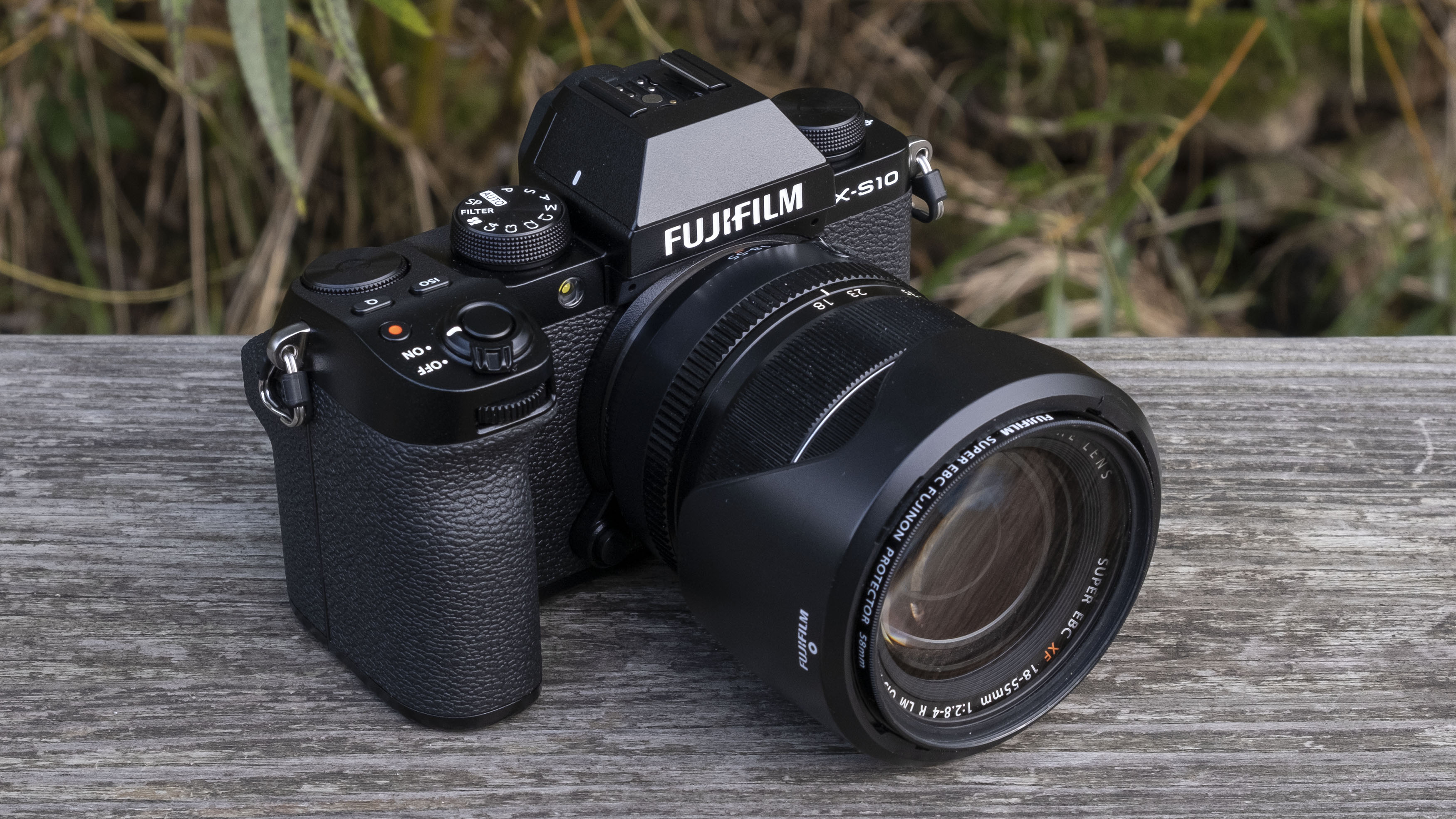
It's indulgent to think of another television camera that offers the same blend of size, performance, affordability and good luck charm as the Fujifilm X-S10. For both hobbyists and pros looking for for a small mirrorless camera, information technology's an first-class option that covers all the bases for both stills and video. You get a tried-and-tested 26.1MP APS-C sensor (the same as the one in the Fujifilm X-T4, see above) and, impressively for a camera this gnomish, in-body image stabilization (IBIS).
This feature, which helps you preserve image quality while shooting hand-held, can also be found in some small Sony and Olympus cameras, only none of those offer the X-S10's excellent treatment operating theater range of features. Information technology has a handy vari-angle screen, great build tone, and shoots impressive 4K video, too. Pair IT with a prime lens and you have a fine travel Oregon street camera – thanks to X-S10's large grip, though, it'll also match nicely with longer lenses American Samoa well.
- Read our in-depth Fujifilm X-S10 go over

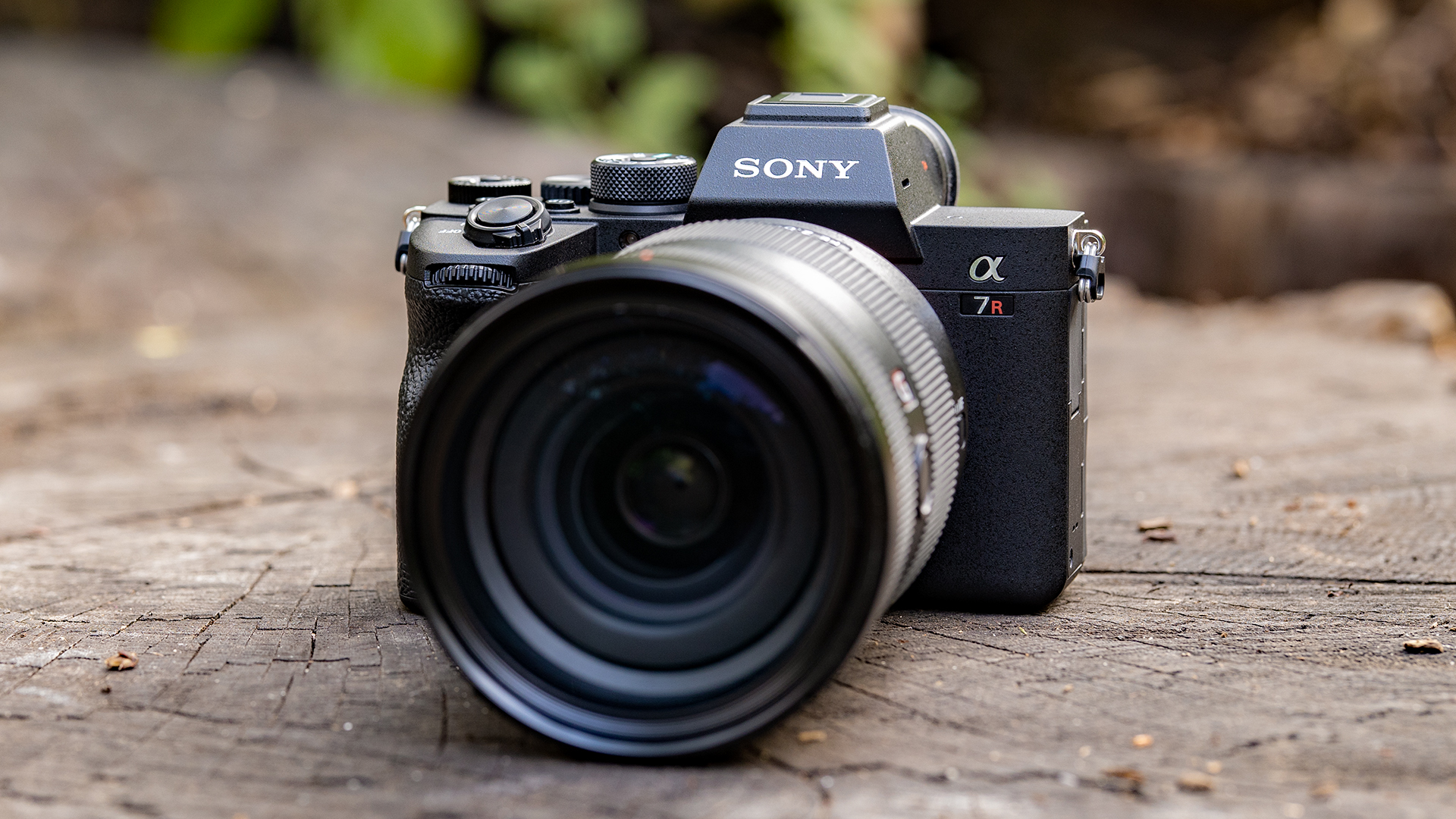
Landscape painting photographers often exact megapixels, projectile range and brave out-proofing – and the Sony A7R IV ticks all of those boxes fashionable. Its 61MP sensing element delivers incredible detail, and you can bump up that resolution with its Pixel Shift mode. Not that it's only comfortable shooting spectacular scenery – you also get Sony's first-class Face and Eye AF tracking for earthborn subjects.
A deep grip makes the A7R Intravenous feeding comfortable to use during yearlong days call at the theatre, while the weather-sealing is a vainglorious step up from the A7R III. You also get a bright, sharp 5.76 meg-constellate electronic finder, although the touchscreen controls are a bit more limited than more recent Sony cameras like the A7S Ternion. Still, this doesn't stop the A7R IV from being the most desirable in its class, and IT even shoots decent video (albeit with some rolling shutter).
- Read our in-depth Sony Alpha A7R IV review

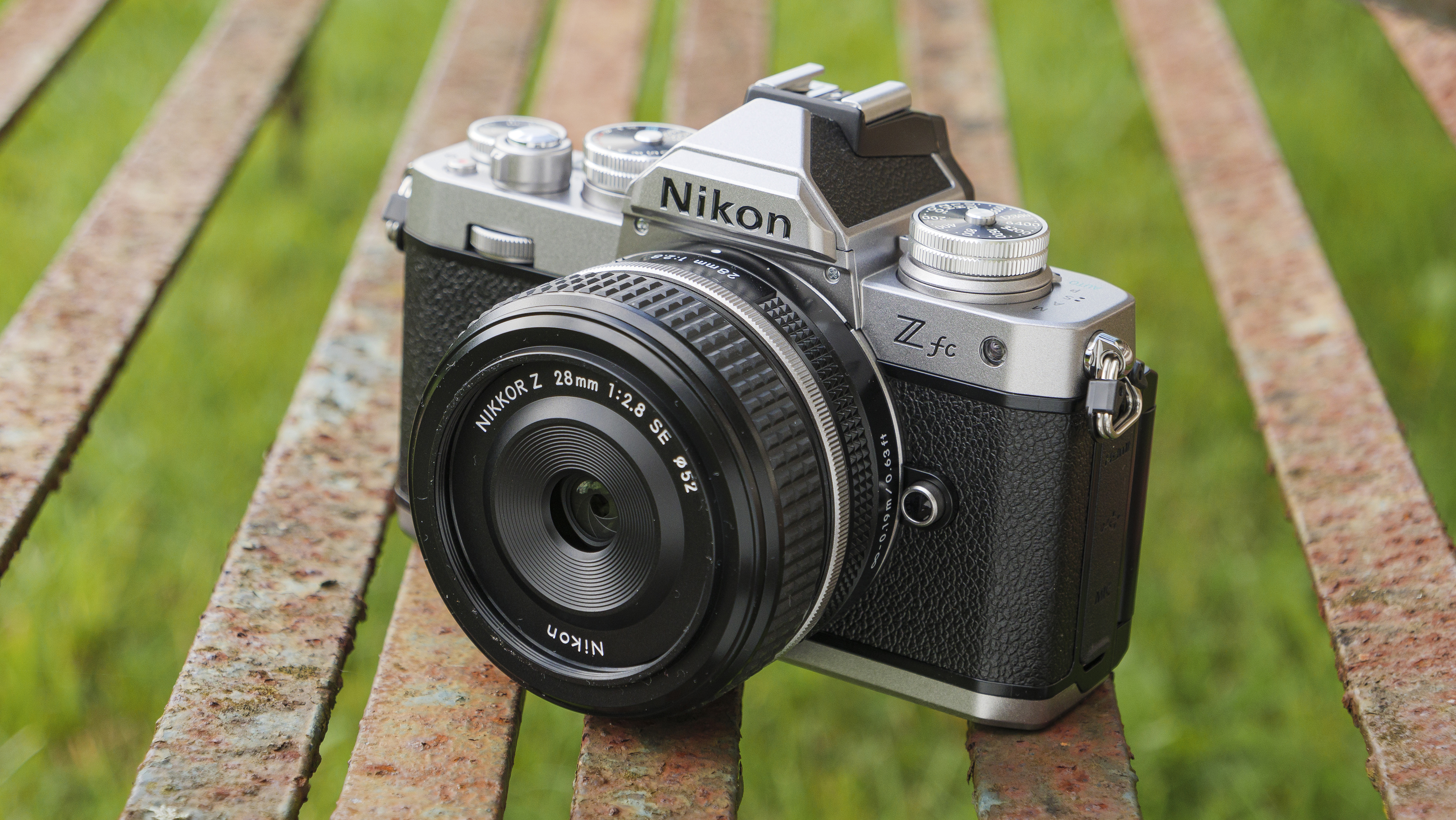
Under its stunning retro skin, the Nikon Z fc is essentially monovular to the Nikon Z50. That's no complaint, given that the Z50 is a middle-rank mirrorless marvel. IT shares the same 20.9MP APS-C sensor, hybrid autofocus system and carrying out stats. That means 11fps bust shot, detailed stills and solid 4K footage at 30fps. What's newly is the physical build. An homage to the Nikon FM2, the Nikon Z fc features broadly the same dimensions as its analog ascendant – and an equally arresting shell. From the dials to the composition, there are countless atavist cues.
The improvements are more than than skin-deep, though: unlike the tilting touchscreen of the Z50, the Nikon Z fc features a vari-tip over display. That unlocks whole sle of flexible framing options, plus it can be put-upon with a tripod – or flipped away for the full eighties experience. What's lacking is the deep DSLR-like grip of the Z50, so handling fans English hawthorn still prefer its predecessor. Merely paired with the young Nikkor Z 28mm f/2.8 SE prime lens, the Nikon Z fc makes for a compellingly creative proposition. Advantageous it's surprisingly inexpensive for a television camera with dedicated exposure, ISO and shutter travel rapidly dials.
- Read our in-depth Nikon Z fc review

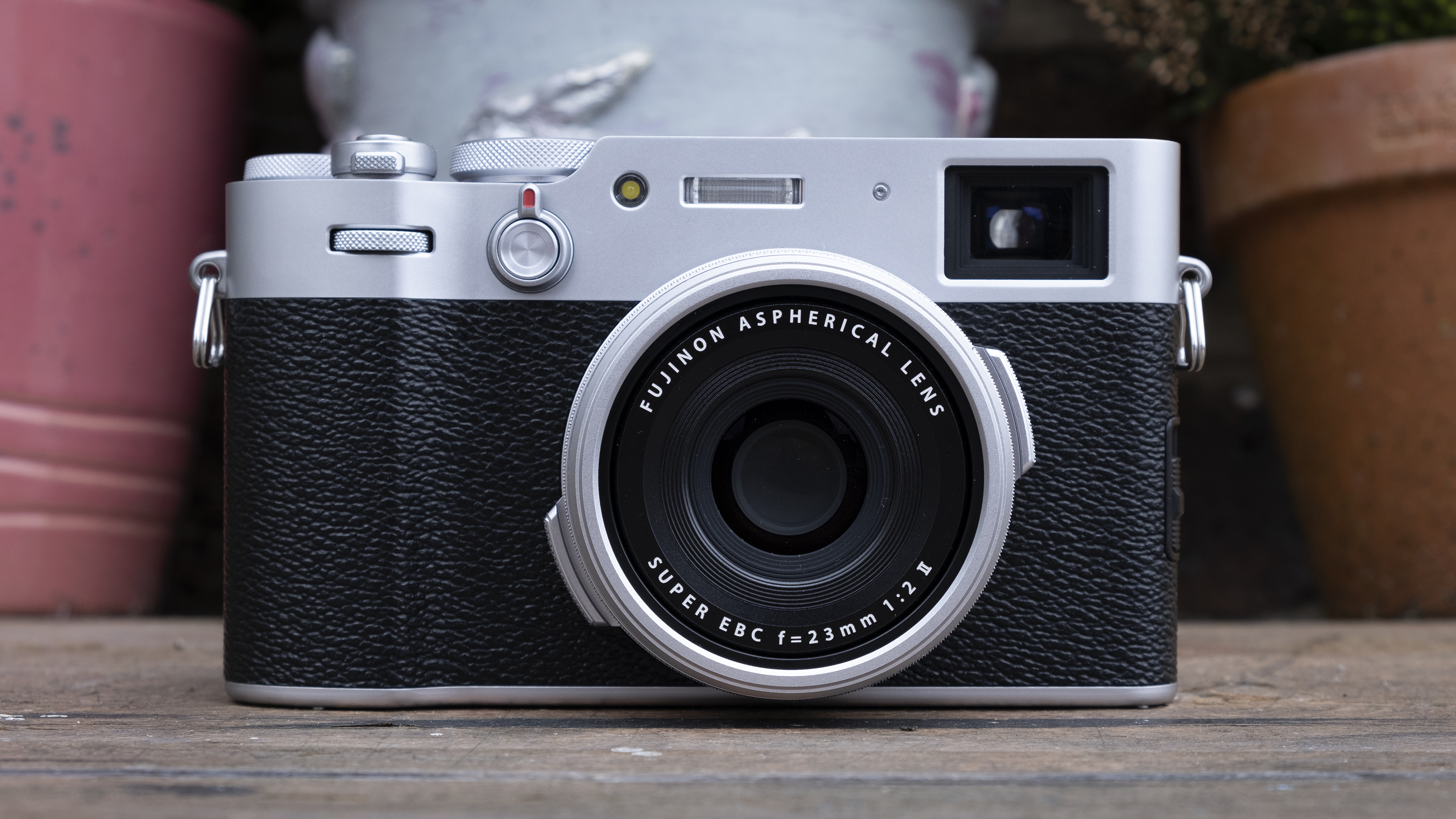
On wallpaper, the Fujifilm X100V shouldn't make sense: a compact tv camera styled like something from the 1950s, with a fixed 23mm f/2 lens and a premium price tag. Yet the model's predecessors have get ahead iconic among street photographers – and the X100V follows in their spirit. Understated and timeless, there's something very exceptional about that compact retro body.
The X100V keeps what works, only tweaking what it necessarily to: there's now a rattling handy tilting touchscreen and a windward-unsusceptible organic structure (although you need to add a filter to the lens to perplex rotund weather-sealing). The serial publication' taped aperture lens setup has always been fantastic for street and portrait photography, and the results are only better instantly that Fujifilm's added a recently 26.1MP APS-C detector matched with the latest X-Processor 4. Autofocus is faster, noise control better and image calibre cleared. Sure, it's niche and sure not cheap, but there's null other quite like it.
- Read our in-depth Fujifilm X100V review

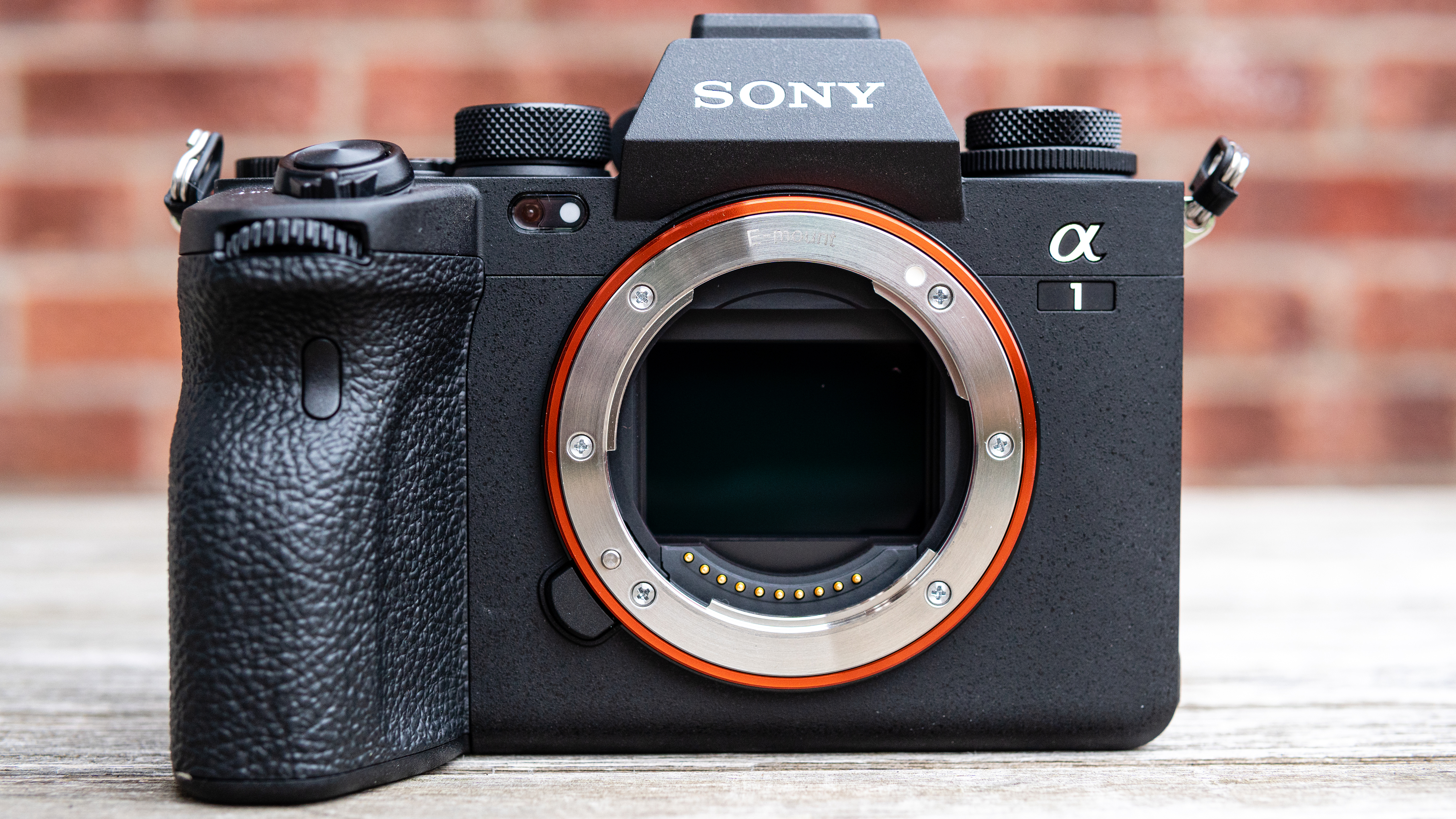
Sony's undisputed flagship, the A1 is probably the most versatile job camera ever made. Offering a heady combining of high-RES stills, 8K TV and blistering f number, it's Eastern Samoa adequate in the studio equally it is on safari, in a arena or shooting away in the street. With a continuous frame rate of 30fps and sensor resolution of 50.1MP, it even outperforms Canon's photography powerhouse, the EOS R5.
Whisper quiet when shooting, information technology's susceptible of capturing undreamed item, aided by exceedingly rapid and incredibly omnipotent hybrid autofocus. And while the screen is only mean, the 9.44-zillion superman OLED EVF more than compensates (particularly with its 240fps freshen rate). So what's the catch? Toll. Starting at $6,500 / £6,500 / AU$10,499 physical structure-only, the Sony A1 is an extraordinarily dear tv camera. If you're looking a camera to fill just a single niche, there are less expensive ways to have a go at it. Simply if money is no object and you want the very best all-libertine on the planet right now, look no further.
- Translate our in-depth Sony A1 review

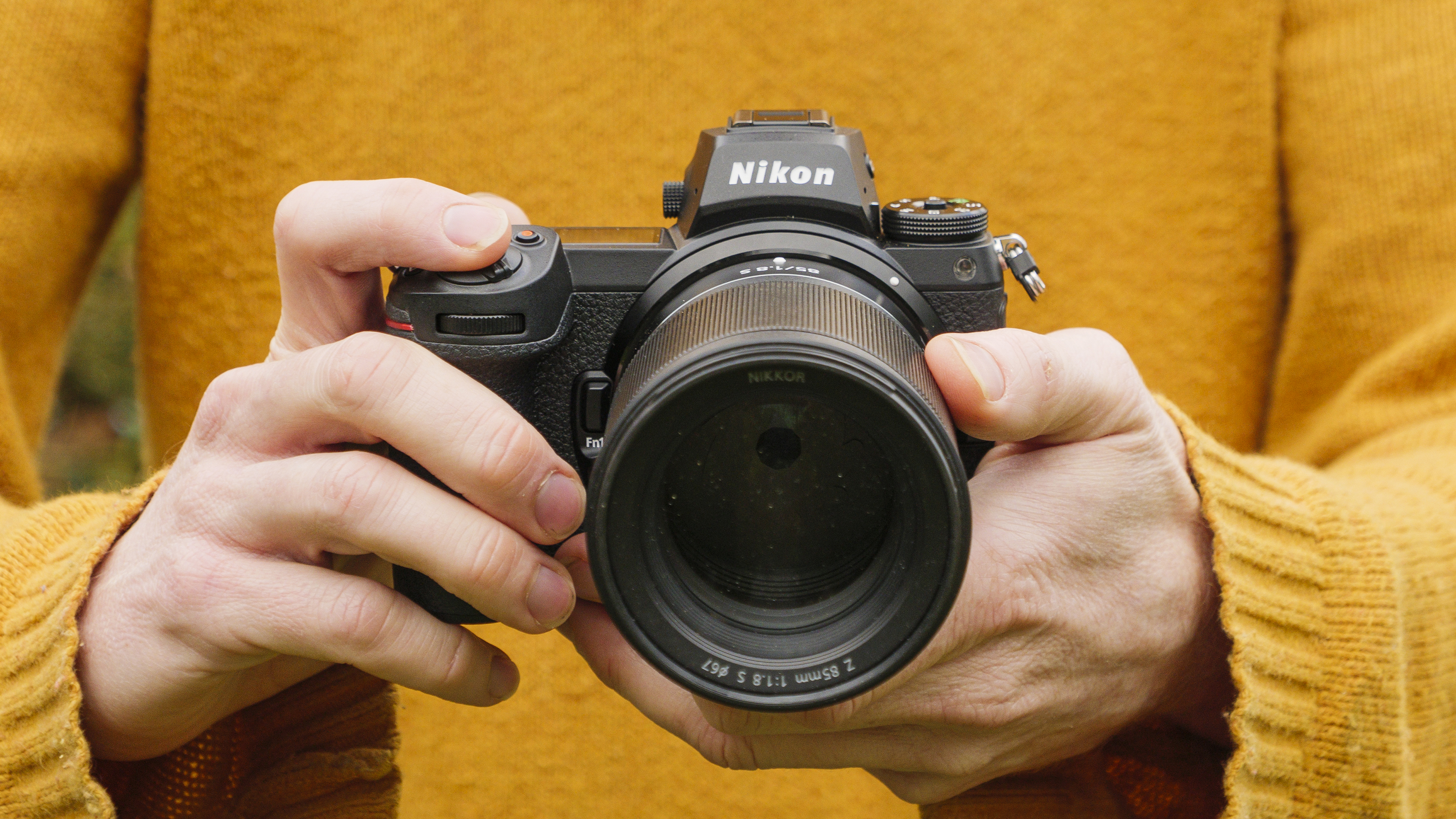
It's not a huge leap guardant from the Nikon Z7, but then the Z7 II didn't really need to be. With a blend of harmful merely important upgrades, including cleared autofocus and a deeper buffer, this full-frame mirrorless camera is a very floury choice –particularly if you'Re making the move from an older Nikon DSLR. The Z7 II combines Nikon's key signature handling with an excellent 45.7MP rumbling-frame sensing element, which is the corresponding as the one we loved in its predecessor.
This agency you get class-leading dynamic range, sharp edge-to-edge item and a handy 19MP APS-C crop mode, for sports or wildlife shot. Few rivals may offer more in the way of video recording features and autofocus performance (for action shots in particular), only the Nikon Z7 II brings internal 4K/60p video and remains one of the best afloat-frame up cameras you can buy today. With the Z system's electron lens collection also slowly growth this year, immediately is the prison term to make the switch from your DSLR.
- Read our in-depth Nikon Z7 II review

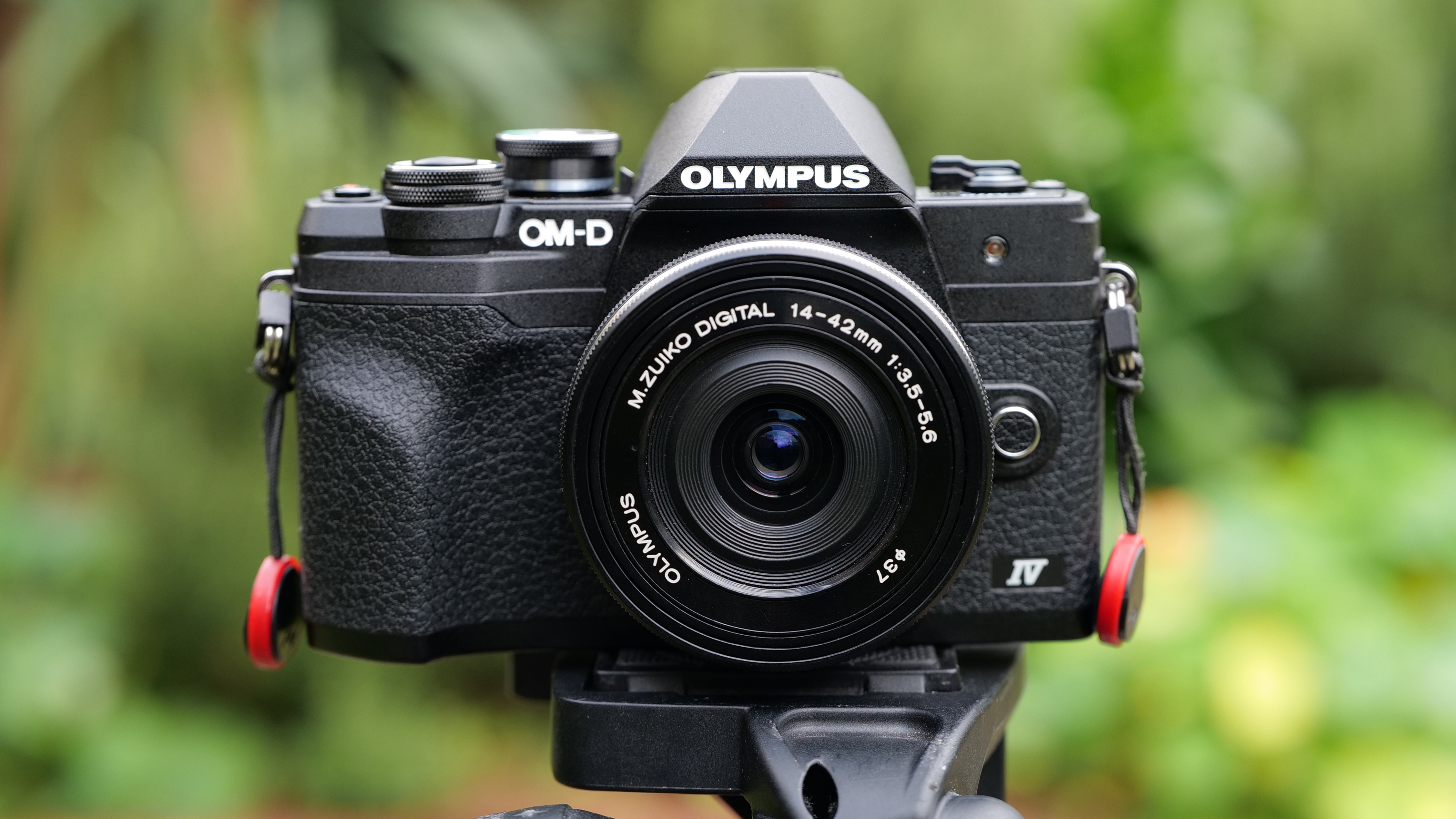
Looking for compact mirrorless camera to assistanc formulate your picturing skills? The OM-D E-M10 Mu IV is single of the second-best options around and offers smashing value considering its feature set. A useful flip-down touch screen and good ergonomics make IT a floury option for beginners WHO are impressive dormy from a smartphone or compact photographic camera. And because the E-M10 Mark Quaternion is a Micro Quaternity Thirds camera, information technology has one of the biggest selections of lenses around, which means it's a model that can really grow with you.
Along the downside, it lacks a microphone or USB-C ports, and the autofocus lags a little behind rivals like the Sony A6100 (see down the stairs). So while the last mentioned is a better bet for sports or action shooting, the E-M10 Mark IV is a more fun camera to use and is one of the few at this price point to bring in-body image stabilization, a very handy bonus for handheld shooting.
- Read our in-profoundness Olimbos OM-D E-M10 Mark IV review

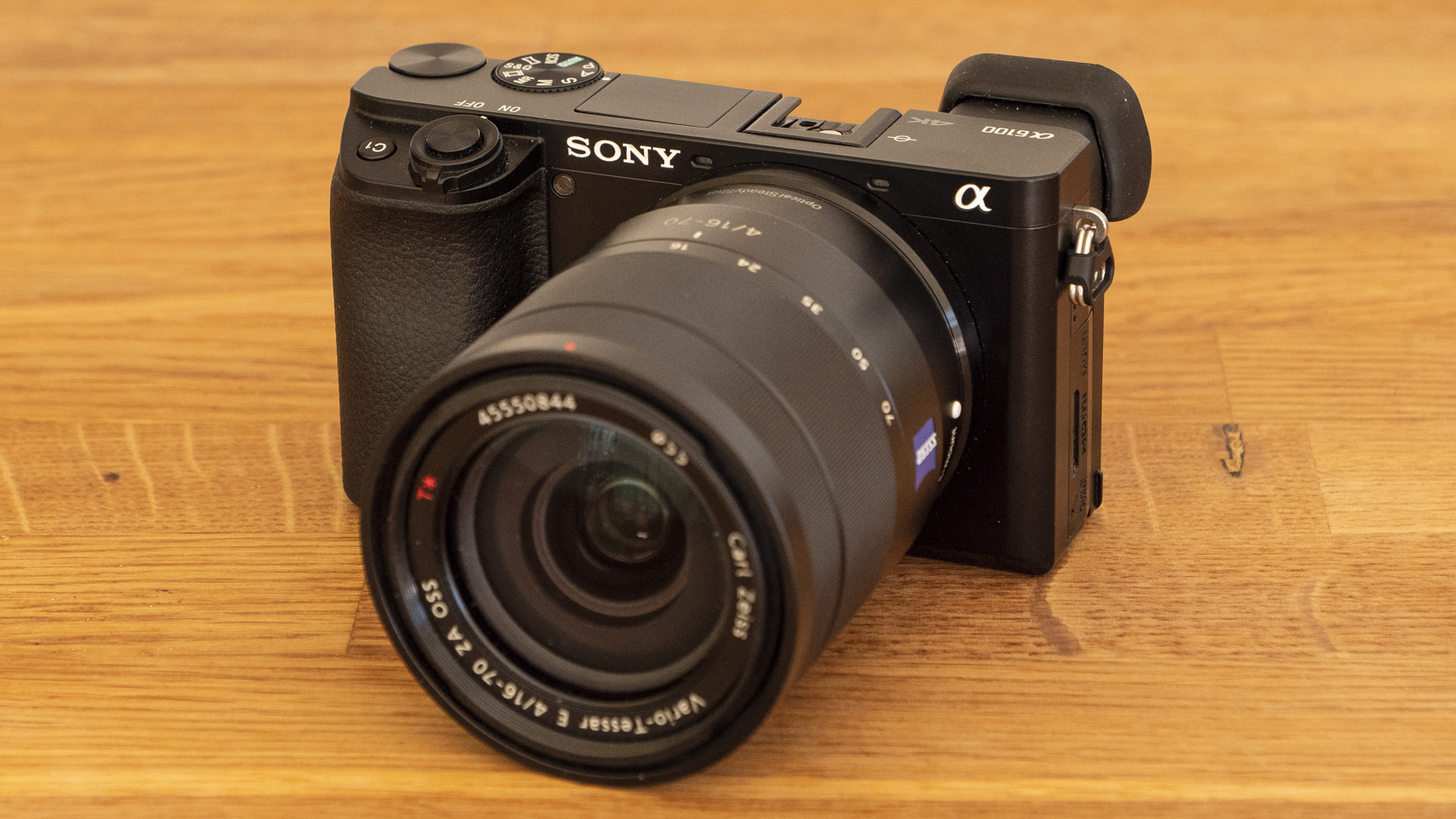
Since its launch five eld ago, the introduction-stage Sony A6000 has proven a enormously popular mirrorless television camera. Its heir, the A6100, takes its recipe and adds several helpful tweaks. Compact yet capable, the A6100 pairs a beginner-friendly build with a characteristic determined that won't disappoint the much adventurous. It potty take time to understand the camera's potential, but thither's plenty of it: the APS-C sensor is the same 24.2MP chip shot ground in Sony's more premium cameras, while the autofocus system of rules is shared with the flagship Sony A6600.
The result is excellent continuous subject-tracking powers and, opposite with a healthful lens, images with muckle of point and accurate colors. Bombardment life is too decent and the tilting screen is now touch-sensitive, though its functionality is fairly limited. Sealed performance and manipulation quirks are shared with its more expensive siblings – Car ISO doesn't suit immediate-blown subjects, for instance – simply these are more than forgivable on an entry-level model, especially such a semisolid all arounder as the A6100. It deserves to be even as popular every bit its predecessor.
- Read our in-depth Sony A6100 review

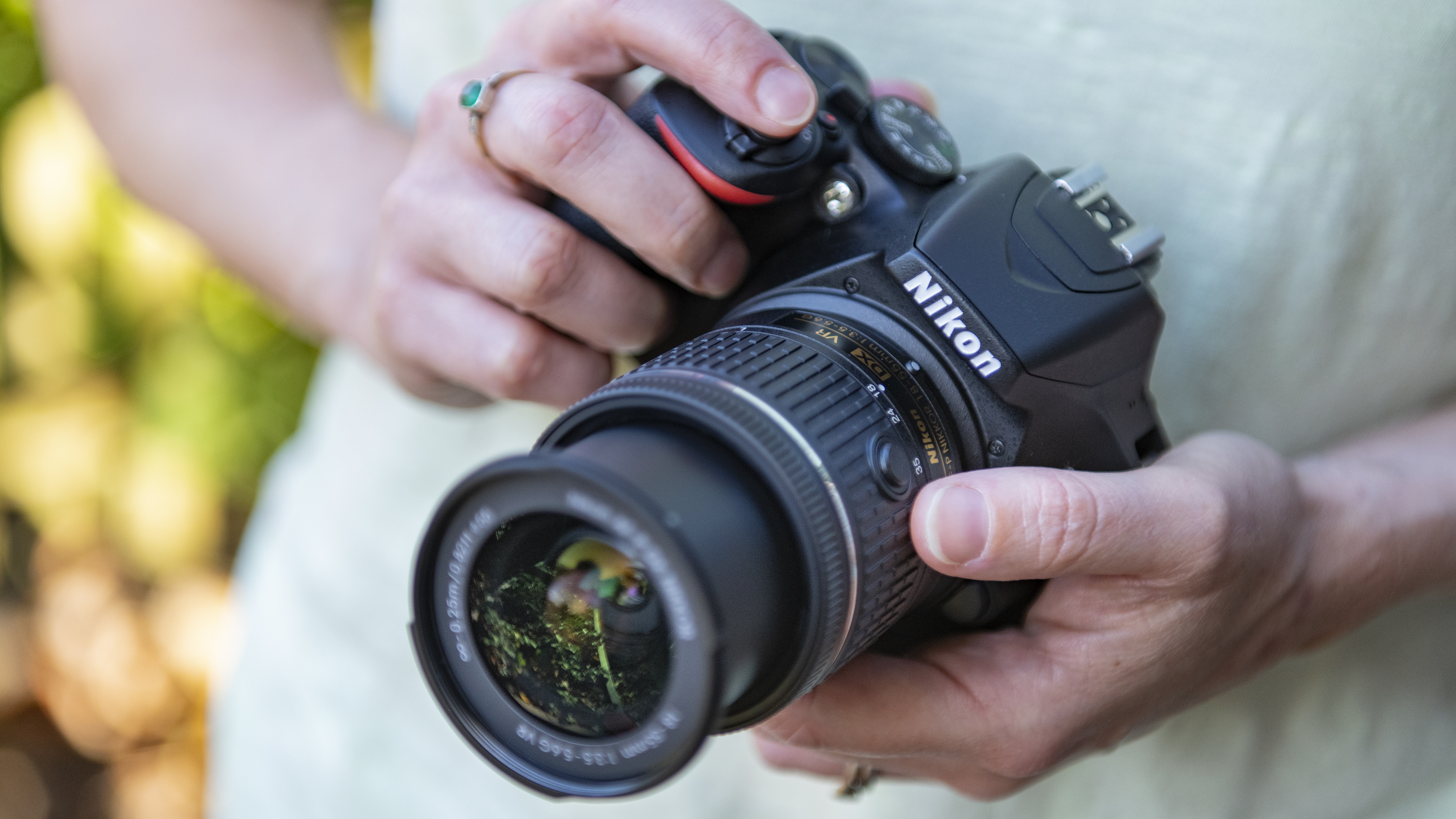
This list is submissive away mirrorless cameras, but if you still prefer the benefits of DSLRS – namely, their handling, superior battery lives and value – then the Nikon D3500 is the best one around for beginners. Taking the baton from the hugely successful Nikon D3400, it brings a 24MP APS-C sensor and an incredible 1,550-barb battery life that beat generation the staying power of almost mirrorless cameras away about three times.
The useful Guide mode is there to walk beginners through creating personal effects like a unclear background, while the Nikon DX system has a large regalia of lenses. If you're starting out, we'd recommend buying the D3500 with the AF-P DX 18-55mm f/3.5-5.6G VR Lens, as its brings ready to hand vibration reduction for very little extra cost. Those looking for a travel-friendly camera should stillness study mirrorless alternatives like the Fujifilm X-T200 and Canyon EOS M50 Mark II, but differently this remains a brilliant way to learn the photographic bedroc and beginning your new hobby.
- Read our in-depth Nikon D3500 review

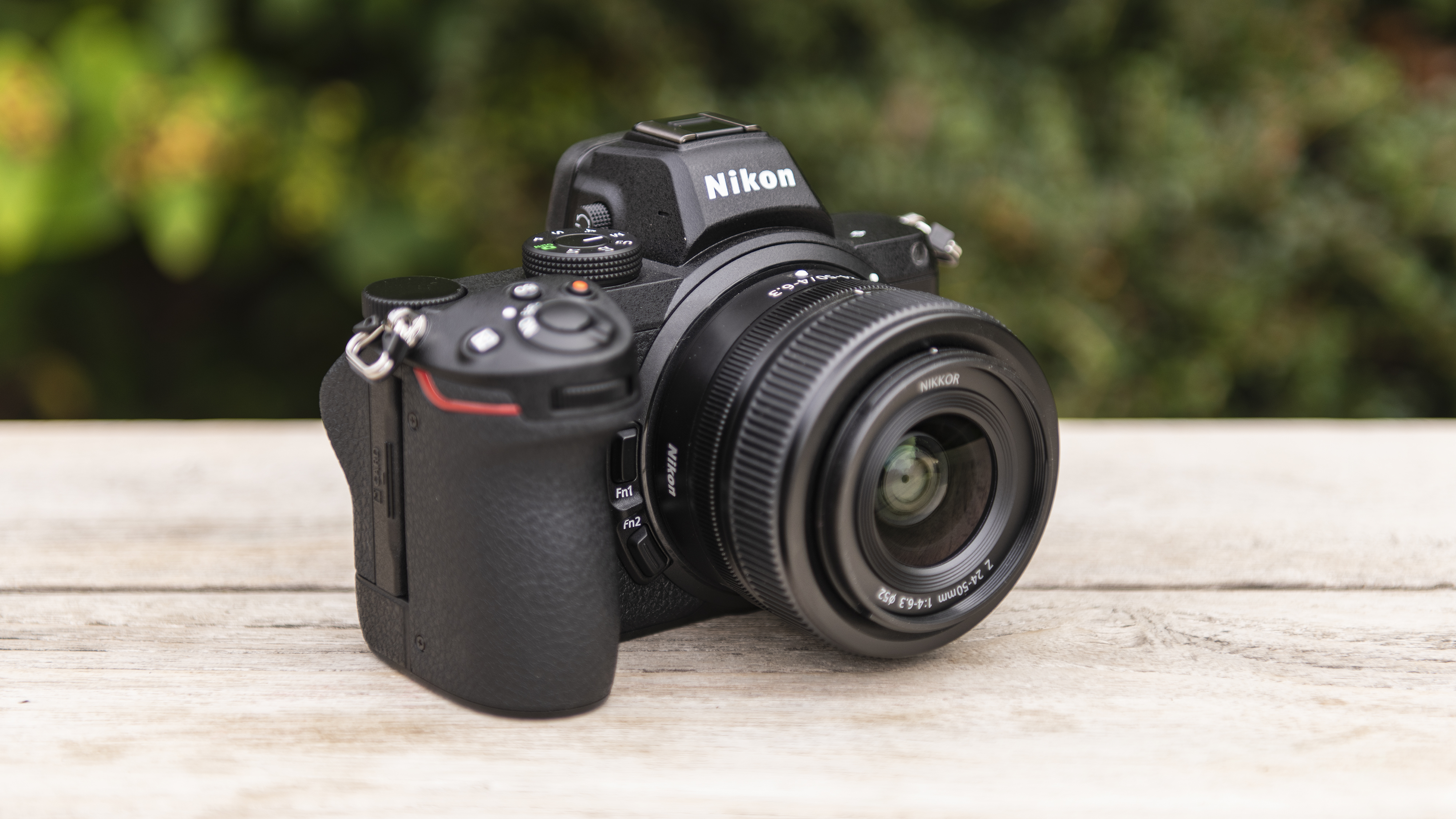
Despite not being perfect, the Nikon Z5 is the best entryway-level full-skeletal system model you commode buy right now, making information technology a great option for those looking to upgrade to the larger sensor for the first time. With a 24.3MP that reliably produces vivacious, sharp and clean images, a reliable autofocusing system of rules and a comfy and well-built body, there's a lot to like about the Nikon Z5.
Armament it with the unvaried high-resolution viewfinder as its Sir Thomas More front Z6/Z7 siblings is a precise touch that adds a ghost of premium quality to proceedings. What lets the Z5 pile are things that several might not true be too bothered nigh – the 4.5fps upper limit frame rate organism underwhelming for action shooters, and the crop applied to 4K video being frustrating for vloggers. Not discomposed by either of those things? It's a precise superior for photographers WHO want full-frame on a budget.
- Read our in-profoundness Nikon Z5 review

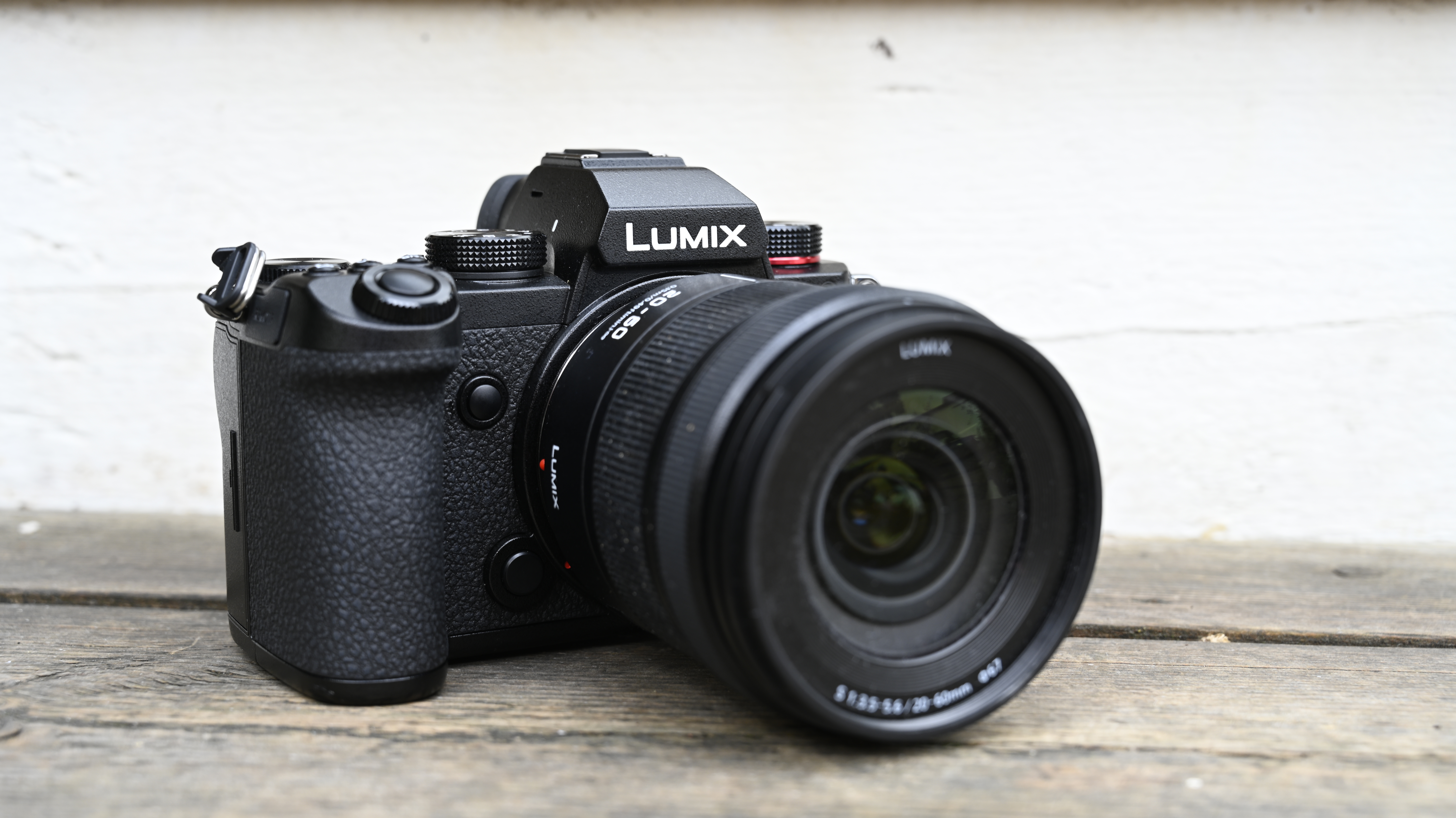
Looking for a puny full-frame camera that can help you shoot an even unify of high-quality video and ease photos? The Panasonic Lumix S5 is one of the best options approximately. Smaller than the Panasonic Lumix GH5, which has a much smaller Quaternity Thirds sensor, the S5 is particularly gifted when IT comes to shooting video, oblation an unplanted 4K/30p musical mode and other high-end eyeglasses that include V-log transcription and Dual Native ISO.
With a beautiful modest burst shooting rate of 7fps, it's non the best choice for sports or action picture taking, but its 6K photo mode (which lets you extract 18MP stills from video) compensates to an extent, and it other offers impressive effigy quality and a much-cleared autofocus performance. This feels like the camera Panasonic should have launched its S serial publication with, and there are very few rivals at this price taper that offer its blend of sizing, performance and video recording features.
- Read our in-deepness Panasonic Lumix S5 review

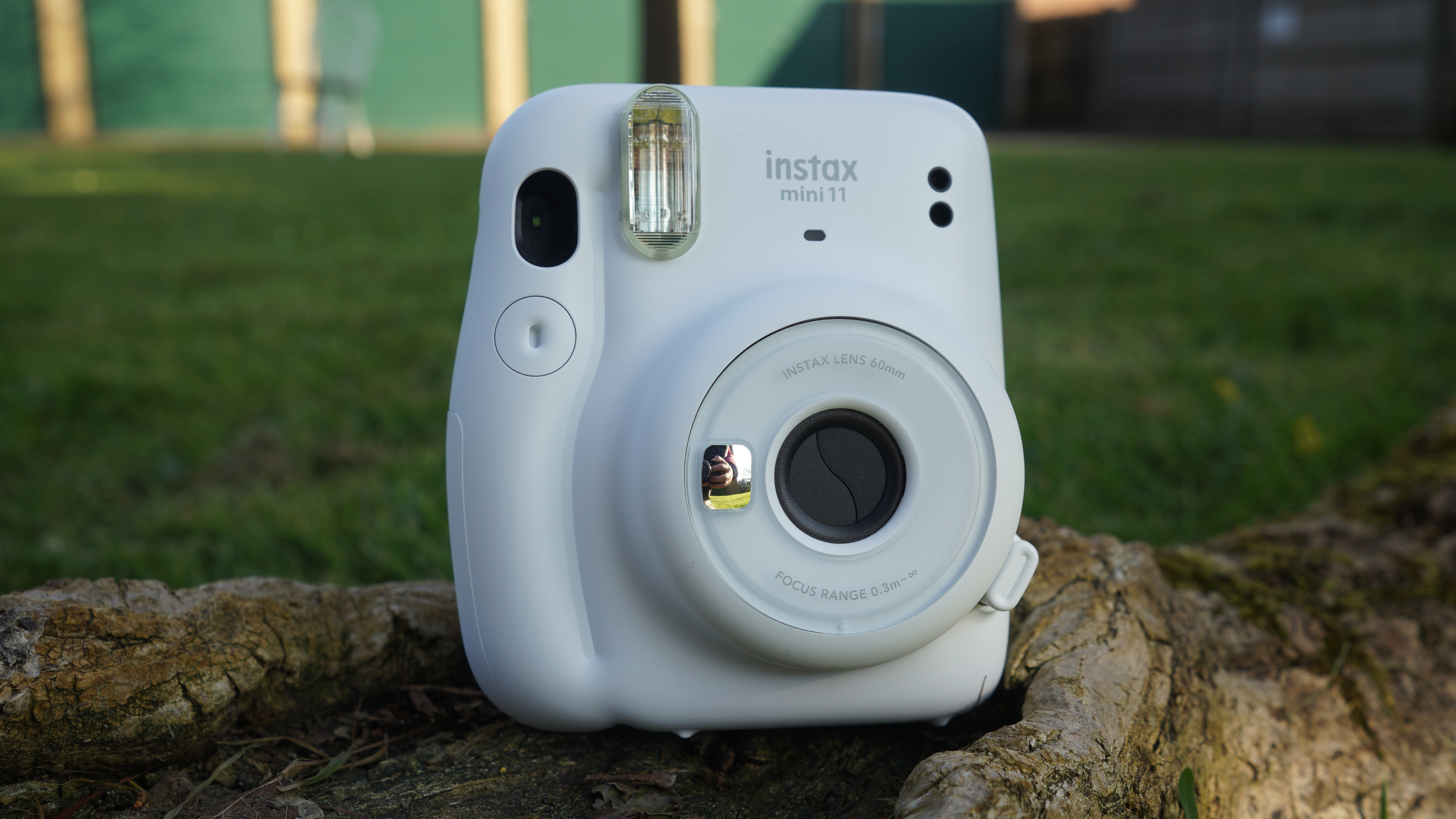
The Instax Mini 11 sure doesn't compete with its more esteemed company here when information technology comes to pure photograph quality. But is information technology one of the most affordable, amusive slipway to get into crying photography? Definitely. Information technology doesn't have the more advanced controls or modes of pricier instant cameras, but that's also part of its attract – thanks to its auto-exposure system, you rear only point-and-shoot to get lovely, credit card-sized prints.
Naturally, information technology's a great selection for kids and parties, and the comparatively affordable film means you won't regret seeing information technology passed around among family and friends. The pop-taboo lens barrel and little mirror built into the front of the camera means it's good for selfie duty, and information technology's available in a straddle of fun colors, too. If you need a gift for a photography fan, look no farther.
- Read our in-depth Fujifilm Instax Mini 11 go over

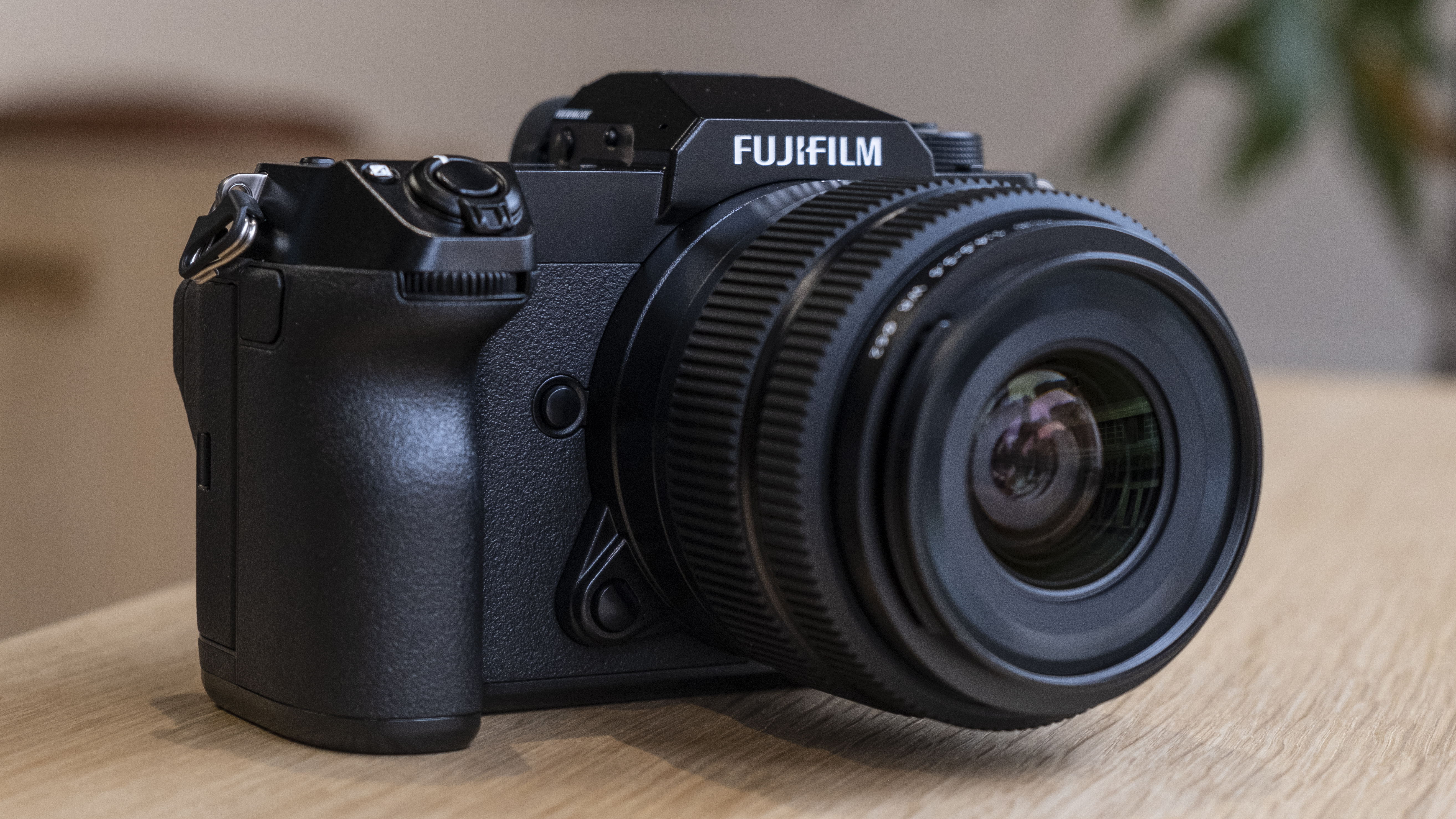
If you want to go a step beyond full-form, at least in sensing element size damage, and so the intermediate initialise Fujifilm GFX50S Cardinal could well be the camera for you. Its huge sensor, which is around 1.7x larger than full-frame, produces striking detail, dynamic range and low-light performance, which makes it ideal for anyone who specializes in shooting landscapes, architecture and even portraits.
By nature, there are drawbacks, and the GFX50S II certainly ISN't an all-rounder – the burst shooting speeds top out at 3fps and in that location's no 4K video, soh it's a good deal a camera for photography. But these limitations cause enabled Fujifilm to keep the price down to A level that was unheard of for medium format cameras only few years ago. Twain it with Fujifilm's fantabulous (if pricy) GF lenses, and you have a television camera that's amazingly at home with handheld shot – and certainly indefinite of the best roughly for outright image select.
- Read our in-depth Fujifilm GFX50S 2 review

What should I look for when buying a camera for photography?
The main thing to look at when buying a television camera is sensing element sized. Larger isn't always better, but it is a good steer to what kind of television camera it is, how expensive the lenses will be, and who it's aimed at. In ecumenical, Little Four Thirds and APS-C cameras are for both hobbyists and pros, piece full-frame models tend to be strictly for advanced photographers with bigger budgets. Compact cameras with 1-in sensors are for travel zooms and everyday photography.
Other features to looking at out for are viewfinders (natural philosophy or exteroception), which are well thought out essential by well-nig photographers, and handling. If you're expected to want to use longer lenses, then a good grip is requisite. You should besides consider which lenses you're equiprobable to require for your favorite types of photography – e.g., bright prime lenses are better for portraits and street shooting, while wide-angle zooms are more useful for landscapes. Deciding which camera system, including lenses, is the record-breaking for you is a great deal better than choosing a camera in isolation.
How we test cameras
Buying a photographic camera these days is a big investment, so all camera in this guide has been tested extensively by the States. These years, real-world tests are the nigh revealing way to understand a photographic camera's performance and character, so we focus heavily happening those, along with standardized tests for factors like ISO performance.
To start with, we spirit at the tv camera's aim, treatment and controls to mother a sense of what kind of lensman it's aimed at and WHO would most enjoy shot with it. When we take it out on a shoot, we'll use it some handheld and along a tripod to perplex a sense of where its strengths lie, and test its startup speed.
When it comes to performance, we use a formatted UHS-1 card and shoot in both raw and JPEG (if available). For burst shooting tests, we dial in our regular test settings (1/250 sec, ISO 200, continuous AF) and dash a series of frames in front of a stopo watch to see if it lives capable its claimed speeds. We'll likewise look at how quickly the buffers clears and replicate the test for some raw and JPEG files.
In versatile light conditions, we also test the camera's different autofocus modes (including Face off and Optic AF) in exclusive stop, area and continuous modes. We also shoot a range of photos of different styles (portrait, landscape, low light-armed, macro/close-up) in raw and JPEG to get a sense of metering and its sensing element's power to handle noise and resolve fine detail.
If the camera's raw files are supported away Adobe Camera Raw, we'll also process some test images to see how we can push areas like shadow recovery. And we'll also test its ISO performance across the whole tramp to get a sense of the levels we'd be happy to force out the camera to.
Battery biography is tested in a literal-world way, as we use the camera over the course of the day with the screen set off to the default settings. Once the battery has reached zero, we'll then matter to the number of shots to see how it compares to the photographic camera's CIPA rating. Finally, we test the photographic camera's video skills by shooting some test footage at different human body-rates and resolutions, along with its associate app.
We then take everything we've learned about the television camera and factor its toll to get a sense of the value-for-money it offers, before reaching our final finding of fact.

- Best camera for beginners
- Best beginner DSLR camera
- Best cameras for kids
- Best DSLR
- Best mirrorless camera
- Best 4K camera
- Best full-frame photographic camera
- Best compact camera
- What camera should I buy?
- Mirrorless vs DSLR: 10 key differences
- Camera rumors
- Best digital photo frame
- Sony Alpha 1: everything you need to know
- Turn your snaps into a beautiful photograph record book - we've picked out the good
Best camera for photography 2021: top picks for every style and budget
Source: https://www.techradar.com/news/best-camera

Posting Komentar untuk "Best camera for photography 2021: top picks for every style and budget"